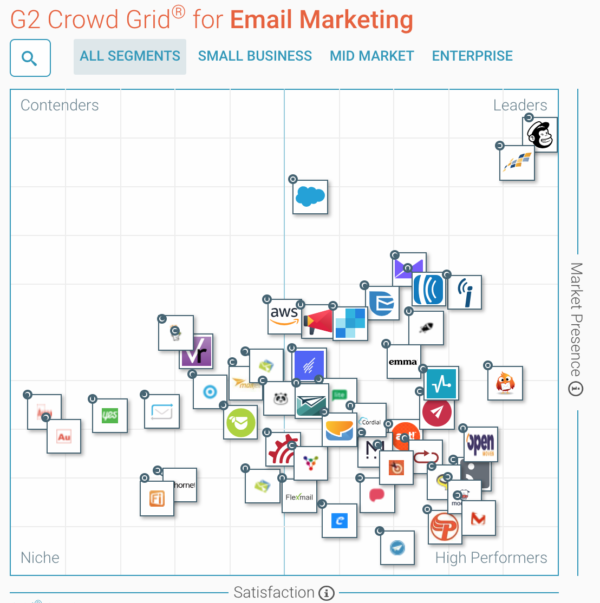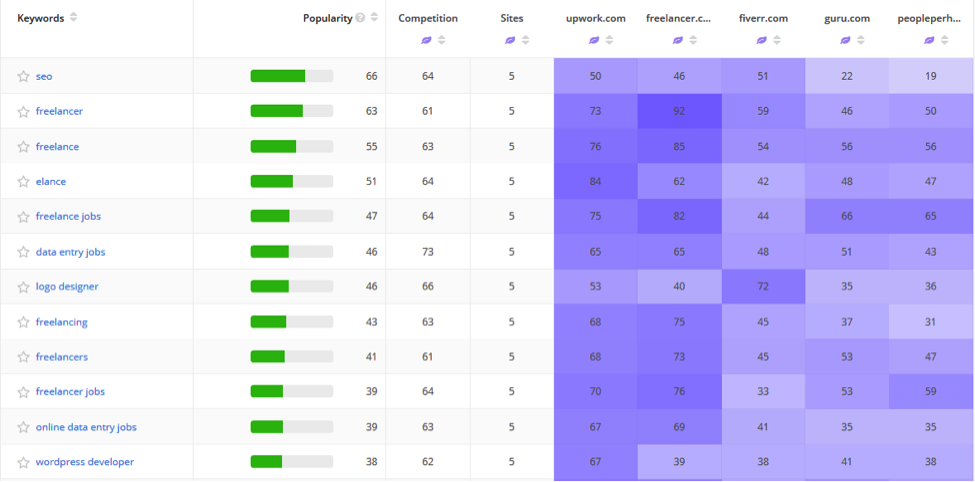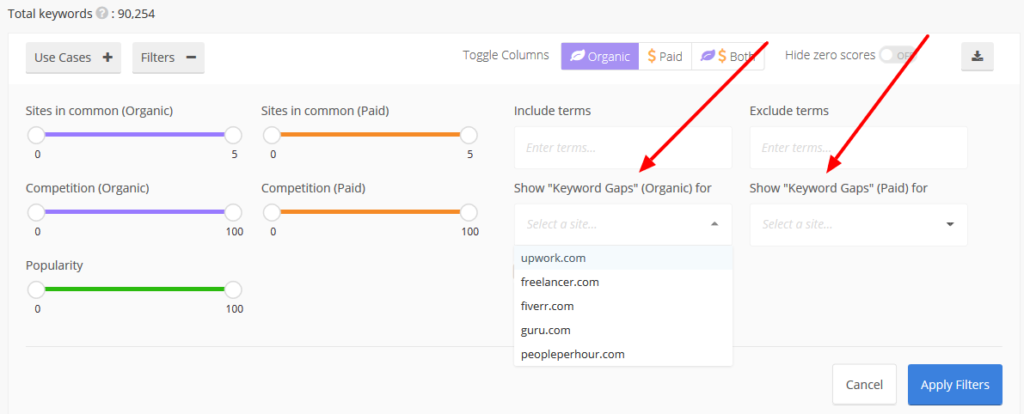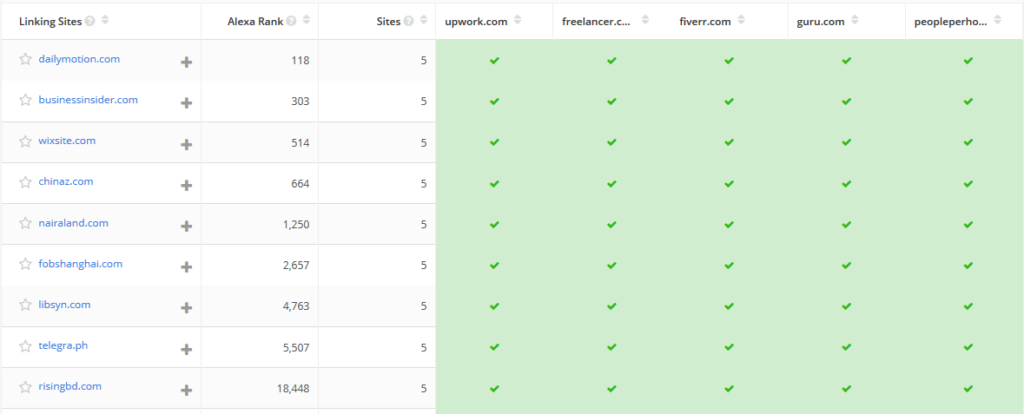A competitive matrix helps you learn about your market segment and identify opportunities to differentiate your brand from competitors, create better products, and develop stronger marketing plans.
This post will help you understand the power of a competitive matrix and show you how you can use it to inform your marketing strategies.
What is a Competitive Matrix?
A competitive matrix is an industry analysis tool that compares the characteristics of multiple brands within your market segment to identify their differences, strengths, and weaknesses. This information helps you uncover your competitive advantage and identify opportunities to grow your business.
A competitive matrix can be as simple as a chart that lists each competitor along with a list of their features and benefits. Or, it can be as complex as a plotted graph with x- and y-axes that represent unique positioning within a market segment.
What is the Purpose of a Competitive Matrix?
A competitive matrix chart is powerful because it helps you get a clear picture of where you stand compared to competitors in your industry. This helps you identify:
- Strengths and weaknesses of each brand in your industry
- What makes your brand unique, and how can you leverage that
- Gaps in your market segment that aren’t currently filled
[novashare_tweet tweet=”A competitive matrix is a powerful tool that gives a clear picture of where you stand compared to others in your industry.” theme=”simple-alt” cta_text=”Click to tweet” hide_hashtags=”true”]
When you can identify gaps in your market segment, you can discover new:
- Tools or features that can meet a need but are missing from the offerings in your industry
- Content that your audience would want to read and consume
- Search marketing campaigns that target popular, low-competition search terms
- Opportunities for niche marketing
How to Make a Competitive Matrix
There are multiple approaches to creating a competitive matrix chart. Here are a few popular competitive matrix examples to help you decide which is best for you.
G2 Crowd Grid
G2 Crowd produces competitive matrix grids for many market segments, such as the Email Marketing example below.

The grid displays products and services in a particular industry that have been rated based on satisfaction and presence. It then plots them in four quadrants: Leaders, High Performers, Contenders, and niches.
The grid can also be sorted by Small Business, Mid-Market, and Enterprise to get a more tailored look at key players in each market segment.
G2 Crowd’s Segmented Grids are a valuable competitive matrix tool that can help you visualize the competitive landscape. By illustrating how you and your competitors stack up to other players and industry leaders, you can complete a thorough competitive analysis that helps inform your marketing strategy.
Having a complete view of the competitive landscape and understanding what it takes to complete is critical in setting tailored marketing objectives and achievable goals for your brand.
Feature Comparison Matrix
A Feature Comparison Matrix gives you a top-level look at products you and your competitors offer. It uses rows of features and columns of competitors to compare and contrast the product mix available from each player.

To create your own Feature Comparison Matrix, gather information about competing products or services and use the simple framework to place them side by side.
This process will help you see:
- Features that you are missing – which helps you identify opportunities to improve your product.
- Features that make your offering unique – which help you identify opportunities to differentiate your brand through marketing.
Competitive Keyword Matrix
A Competitive Keyword Matrix overviews the keywords driving the most traffic to your competitors. This version of a competitive matrix helps you visualize the organic and paid keywords that drive traffic to you and your competitors.
Rows show the top keywords, and the columns list your competitors. The intersection of the rows and columns shows an Organic or Paid Traffic Score, which represents the relative traffic estimated to the site for the particular keyword.
Filters on the Competitive Keyword Matrix tool also help you gather deeper insights and expose new content opportunities. Use the filter to “Show Keyword Gaps” for your brand to produce a competitive matrix that highlights keywords driving traffic to your competitors but not your site.
In the example below, you can see how Upwork can use the matrix to identify keyword gaps for their brand. These gaps represent content opportunities that can drive traffic to their site and improve their authority in search.
Competitor Backlink Checker Matrix
The Competitor Backlink Checker is another type of competitive matrix tool. It performs a competitor backlink analysis to show you the backlinks you and competitors get traffic for and linking opportunities you haven’t leveraged yet.
In the Competitor Backlink Checker, the rows show sites that link to competitors listed in each column. By researching the links that drive traffic to competitors, you can also identify backlink opportunities that would be valuable for your site.
Like the Competitive Keyword Matrix, you can use filters to make this matrix even more useful. Use filters to “Show Backlink Gaps” for your brand.
This filter adjusts the matrix to show the top sites linking to competitors on your list, but not to you.
Use this information to identify high-quality backlinks, partnerships, or guest blogging opportunities that could drive traffic to your site.
How to Get Information to Create a Competitive Matrix
A competitive matrix is only as good as the information included in it. The data in the matrix must be accurate if you want an accurate view of your industry and the competitive landscape.
[novashare_tweet tweet=”A competitive matrix is only as good as the information included in it.” theme=”simple-alt” cta_text=”Click to tweet” hide_hashtags=”true”]
Conduct a comprehensive competitive website analysis to help you gather accurate information to use in your competitive matrix.
A competitive analysis is a deep review of competitors in your market segment. Unlike a competitive matrix, which offers a high-level look at the competition in your industry, a competitor analysis goes deep to uncover specific details about each competitor. It’s helpful to perform a competitive analysis before creating a competitive matrix, as it can provide the data and details to use in your charts.
Here’s a competitive analysis example to get you started. Then use our competitive analysis template to walk you through the process.
The analysis can help you:
- Benchmark your site against your top competitors
- Identify new competitors you didn’t know about
- Know the sites and topics your target audience cares about most
- Compare keywords and backlinks that drive traffic to you and your competitors
Simplify Your Competitor Research
A competitive matrix is incredibly useful in a marketing plan, as it allows you to learn about your industry and identify opportunities to grow your brand.
[novashare_tweet tweet=” The four matrices mentioned in this post will help you find opportunities to improve your brand positioning, focus your product development, and boost performance from content and search marketing” theme=”simple-alt” cta_text=”Click to tweet” hide_hashtags=”true”]
Use the tips in this post to create your competitive matrix, and check our competitive intelligence service to help you gather information for a complete competitive analysis. Our competitive research tools help you collect the data you need to identify top opportunities in your market segment.
Source: blog.alexa.com











